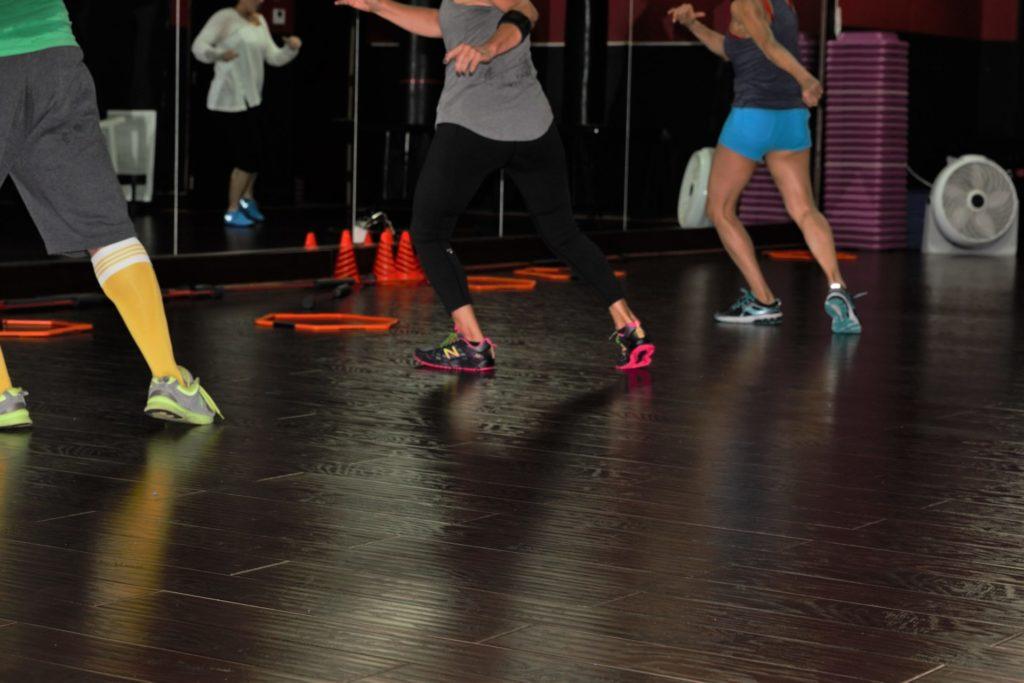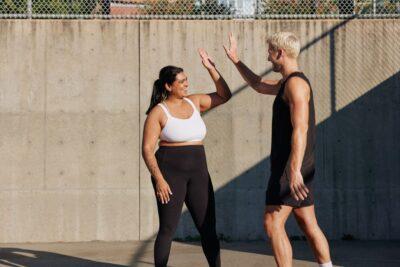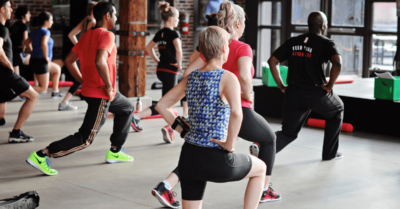The question of how the fitness industry can survive the effects of Covid-19 has been asked thousands of times in the last 18 months. Daily trips to the gym had been the routine of many millions worldwide.
And then suddenly it stopped.
Not by choice, of course, but by the rampaging effects of a virus that emerged on one side of the world and rapidly spread across to the other side. Gym, bars, restaurants, and smaller retail establishments began closing their doors country by country.
However, the fitness industry found another way. They carried on. Fitness operators found a way to use the technology available to them and reach members online. It wasn’t all plain sailing for operators, though. According to IHRSA, over 22% of health clubs in the US have closed down.
Some feel the signs are ominous. One big issue is around gym capacity. With social distancing measures vital to stopping the spread of Covid-19, there is no way you can fit the same number of members into a class as before. Because of that, members have less chance to attend class, meaning they may cancel their memberships – which directly affects your revenue month on month.
In this article, we will look at the current state of play in the industry in the US, what kind of protection you need to put in place to keep your gym covid safe at a reduced capacity, and the strategies you can implement to maximize revenue at a reduced capacity.
Skip ahead to:
- Gym capacity and the current state of the industry
- How gym capacity affects revenue
- How to deliver a safe member experience with a reduced gym capacity
- How to increase revenue with reduced gym capacity
Gym capacity and the current state of the industry
“Will gyms go the way of arcades and movie rental stores?”
This was the headline in a recent ABC News article on the current state of the fitness industry. The report notes that the behavior of fitness consumers has primarily changed due to the emergence of online classes and other virtual offerings. But, like the way video games and films became available to a broader audience online, there could be a case for fitness going the same way.
A striking point the article touches on is the rapid expansion of Peloton, which is poised to break ground on a new production in Toledo, Ohio, which should be fully operational in 2023, employing about 2000. This means Peloton sees a serious future in the online market, which could cause the brick and mortar industry to change its approach.
IHRSA reports that fitness industry revenue dropped by 58% in 2020. This shows the damage that closures and limited capacity have done to the industry. And it’s not just the smaller operators that have been affected. The same article notes that eight major fitness companies filed for bankruptcy during the year.
The problem of limited capacity is no doubt playing a significant role in the loss of revenue. The Denver Post explored this very topic recently, looking at a range of different gyms and studios in the state of Colorado. Boutique and class-based studios, in particular, are struggling to accommodate adequate social distancing while operating at a limited capacity. One studio owner describes the current situation as “running on fumes.”
Unfortunately, the reality is that you need to stick to the guidelines to remain legal and open. This, however, can cause a lot of issues with generating the revenue you need to survive.
How gym capacity affects revenue
As we have noted many times before, generating revenue is the lifeline of any business. Revenue is generated by acquiring members regularly and, crucially, retaining them long-term. And, while there are other ways of generating revenue such as transformation programs, 1:1 personal training, and branded merchandise, they will in no way keep your business afloat when acquisition and retention are low.
A key factor affecting this mainstream of revenue is limited capacity. Therefore, gym capacity will directly affect the revenue levels in the business in a straightforward way. If members find that they cannot book a class due to every class being full or the experience is not what it once was due to the reduced capacity, they will quit your gym and move on to somewhere else.
It’s common knowledge that providing a good experience is essential to retaining your members’ long-term. However, if you are facing the prospect of running your business at a reduced capacity, there are several different ways to still provide an excellent experience for your members. We will go into these further down in the article.
Delivering a great experience also means providing a safe experience. So before going into these vital member experience strategies, let’s take a look at the different ways to keep your members safe while operating at a reduced gym capacity.
How to deliver a safe member experience with a reduced gym capacity
One of the significant risks associated with reopening your gym or studio is that Covid-19 could potentially be spread. As this article states, excess respiratory droplets are a considerable risk when exercising. So when your members return, they need to feel safe and that those they’re exercising with also feel safe. Here are several actions you can take to make your studio space as safe as possible.
Make everything contactless
Researchers have found that touching surfaces does not spread Covid-19 as easily as first thought. However, it still should be best practice to make every interaction in your gym as contactless as possible.
The Top 10 Barriers
Slowing Your Fitness
Business Growth
Discover more Most gyms and studios have a mobile app that allows members to book into classes seamlessly. This app could also check members into classes at a remote kiosk where there is no face-to-face interaction with staff. Members could also make payments through this app.
Implement signs and screens where possible
Members returning to your gym in a reduced capacity will need direction and reassurance about what they are doing and what safety measures are in place. Ensure that there are clear signs everywhere on what safety protocols are in place. For example, many facilities have markings on the floor to ensure that members know where to go and safely keep their distance.
A safety tactic a lot of businesses use today is screens. Commonly screens are seen at retail stores at the cash registers or between tables in bars and restaurants. In a fitness facility, a screen can be used to section off individual training pods so members can work out safely.
Create a health and safety plan for staff
An essential element in any health and safety plan is the staff. To ensure that measures are followed and implemented daily, train staff on the protocols. Without this, standards will slip, and members could become unhappy with a lack of health and safety oversight. In addition, ensure that staff communicates to all members the protocols that need to be followed every day in the facility.
The first step is to create an easy-to-follow playbook for your staff. Next, conduct a thorough run-through of the playbook so every staff member understands what is expected. Following on from this, it’s essential to check in with staff on any issues with any stresses that arise from dealing with Covid-19. Finally, provide staff with all the Personal Protective Equipment (PPE) they need to do their job.
Ventilate your facility
The Centre of Disease Control (CDC) in the US has various directives to deal with Covid-19 in the workplace. One of these is ventilation. The CDC recommends that businesses assess their heating, ventilation, and air conditioning (HVAC) systems when they reopen. They also advise using a HVAC professional to help carry out this assessment.
According to the CDC, a business would need a sound quality ventilation system because SARS-CoV-2 particles spread more readily indoors than they do outdoors. Lessen the concentration of these particles with a proper HVAC system. This kind of system is vital in a gym or fitness studio, where people will be breathing more heavily and quickly.
Look after your staff and members
Amid business closure and reopenings, the stress of lost revenue, and the uncertainty of what’s to come down the line, it’s easy to lose sight of the most important factor in this pandemic – the health and safety of all staff and members. A daily temperature check should be implemented where possible. Consult with staff and members before taking this action.
If a staff member feels unwell, they should be able to call in sick without fear of reprisal. Similarly, remove any late cancellations penalties you may have had for classes before. If a staff member or actual member is feeling unwell, encourage them to stay away and follow the necessary protocols until they are fully clear to return.
How to increase revenue with reduced gym capacity
Innovation is at the heart of every successful business. However, unforeseen circumstances consistently challenge entrepreneurs. This was the case pre-pandemic and will be the case post-pandemic. Alex Hormozi, one of the most successful entrepreneurs in the business, joined us on our podcast last year and made the point that winners win – if you see others succeeding around you, then there is no reason you can’t too.
Reduced gym capacity is a severe challenge to fitness operators the world over. Revenue levels won’t be the same as before, and you will feel the knock-on effect all over the business. But there are ways around this. The strategies below will help you deal with the reduced capacity in your facility and push your revenue numbers up during this challenging period.
Operate an online platform
The most apparent strategy is your online platform. Since the beginning of the pandemic, when lockdowns occurred across the globe, fitness operators faced no choice but to move online. A Club Intel survey of 2000 people found that 27% of people moved their business online. Surprisingly this actually rose to 58% as clubs reopened. The indication is studios are adapting online into their business model.
The essential advantage of an online platform is you give more of your members access to a class. In some cases, members may feel more comfortable attending class online. As Intelivideo CEO Adam Zeitsiff noted when he joined us on our podcast, online should be a value add and integral to what you offer. By offering the choice of a high-quality digital offering, your members have more selection and won’t miss out on a class. Check out our article on running an online gym for important lessons and insights on this topic.
Take advantage of outdoor fitness
Outdoor Bootcamp has always been a low-cost way to get into the fitness industry. All you need is an outdoor open space like a park and a range of equipment. Just ask Joe Wicks, who began his business with nothing more than a small trailer and some weights in a London park. He built his empire from these humble beginnings, and outdoor fitness fuelled this meteoric rise.
For brick and mortar businesses, outdoor fitness can provide a different way to cater to your membership base during Covid-19 enforced restrictions. Alongside your indoor classes and online offering, an outdoor option can help spread members out and give them a better class choice. Check out this article on running an outdoor boot camp for more information on the topic.
High price, high value
A common misconception held by gyms and studio owners is that you have to lower your prices to undercut the competition. However, this would be the wrong approach and seriously undervalue the service you are offering. Another consequence of a low-cost strategy is constantly trying to attain customers to cover costs – with a reduced gym capacity, this isn’t sustainable.
Experts like Jack Thomas and Alex Hormozi have often discussed charging a higher price for your offering and then delivering on that offering. The higher the price, the more the member feels worth in what you are offering. This strategy also allows you to grow more sustainably – a crucial factor in driving revenue on a reduced capacity.
In summary
Driving the level of revenue that you were before the pandemic may seem like an impossible task. Unfortunately, it’s one of the many challenges that has arisen due to Covid-19. However, the life of a fitness entrepreneur is never easy, and the way to survive is to be innovative so you can deliver a consistent and valuable service to your members.














